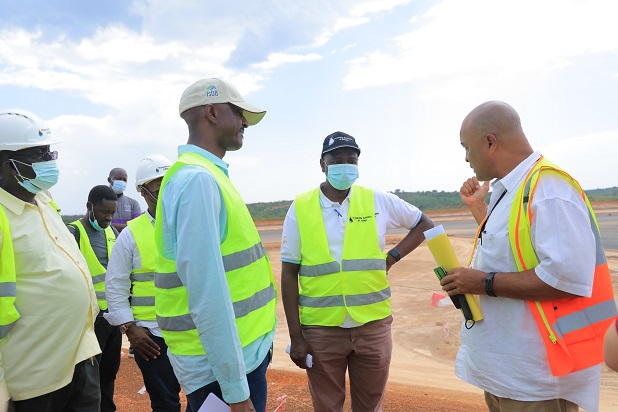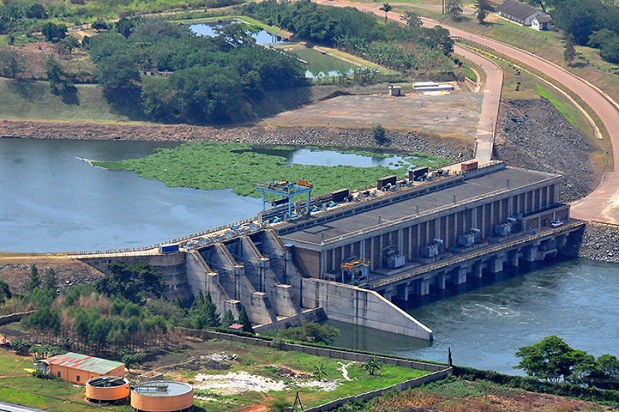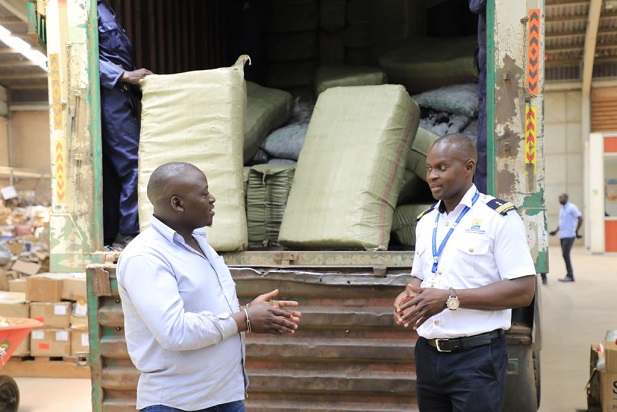Mr. Ramathan Ggoobi _PSST, Mr. Ernest Rubondo_ED PAU listen to Mr. Michael
As Uganda gears up to become a regional oil producing economy, works on the critical oil and gas infrastructure have progressed significantly.
This observation was made by Dr. Ramathan Ggoobi, the Permanent Secretary and Secretary to the Treasury (PS/ST) while on a three-day working field visit to the oil and gas operational areas that was coordinated by the Petroleum Authority of Uganda (PAU).
Dr. Ggoobi said the infrastructure gap which was one of the key challenges to commercialising Uganda’s oil and gas sector had been addressed by Government and was impressed with the progress made in the sector developments following the announcement of the Final Investment Decision (FID) by the Joint Venture Partners.
“We have constructed over 70% of the critical roads, works on phase one of Uganda’s second international airport in Hoima are expected to be completed by February 2023, and the Uganda Petroleum Institute at Kigumba is skilling Ugandan technicians the required international standard for the oil industry. The deliberate efforts which have been undertaken by Government in terms of capacity building, regulatory and institutional framework have convinced me that Uganda has already escaped the oil course.”
Mr. Ernest Rubondo, the Executive Director at the PAU, said the different projects visited impact on the other sectors of the economy differently creating positive contribution to the entire economy. He said the linkages will facilitate the growth of the economy in a manner that is beneficial to all Ugandans working in the different sectors.
“If these oil roads had not been constructed, movement of equipment needed in the oil sector would have been a challenge, but you should also recognise that these same roads are benefiting other sectors of the economy like agriculture, transport and tourism,” said Mr. Rubondo while commenting on the oil and gas sector linkages.
The PAU is currently spearheading two studies to define business opportunities in the agriculture, and housing sectors linked to Uganda’s emerging oil and gas economy.
The study is expected to estimate the current and future demand and supply, assess the status of standards, as well as document the active agricultural enterprises with potential to harness and the capacity to ably absorb emerging opportunities linked to the oil and gas activities, which is expected to drive demand as the country enters the development and production phase.
Following the recent launch of the Parish Development Model (PDM), Dr. Ggoobi revealed that they (MoFPED) were impressed with the progress that has already been registered in the oil and gas sector. and would undertake a similar approach to see how the PDM can feed into the enterprise development by the oil and gas sector players.
“We visited the Stanbic Business Incubator in Hoima and what they are doing there is quite impressive. My team is going to review this and ensure that the communities living within these areas are prioritised during implementation of the PDM to consolidate these efforts,” remarked Dr. Ggoobi.
In a related development, new projections by Government indicate the oil and gas industrial park, once operational, is expected to rake in USD 8bn annually. This is about 7.7% of Uganda’s current GDP that stands at USD 37.7bn. This revelation was made by Dr. Michael Nkambo Mugerwa, the General Manager Uganda Refinery Holding Company Ltd, a subsidiary of Uganda National Oil Company (UNOC).
Dr. Mugerwa compared Uganda’s industrial park to that of Singapore, which is almost similar in size to that of Uganda. He indicated that Singapore GDP is equivalent to $350 billion but 10% of that value comes from the industrial park, annually.
“This is why there is need for Government to fund this project to its full implementation due to the immense potential for sector linkages, and the need to broaden the economic resource base of the country,” said Dr. Mugerwa.
The three-day field visit commenced with a tour of the Uganda Petroleum Institute -Kigumba (UPIK) on 8th April 2022, the Tilenga Project in Nwoya and Buliisa Districts on 9th April 2022, together with the Kingfisher Development Project and the Kabaale Industrial Area on 10th April 2022.
Following the announcement of the FID by the Joint Venture Companies TotalEnergies, CNOOC Uganda, and UNOC, the oil and gas sector has seen a ramp up in activities with construction works, and award of contracts for the three major projects of Tilenga, Kingfisher and EACOP.
PROGRESS ON THE ONGOING PROJECTS
Tilenga Project
The site preparation works on the Tilenga Industrial Area have progressed and currently stand at 60% completion rate. The Industrial Area will host the main Tilenga surface facilities which include the Central Processing Facility (CPF), the Construction Support Base (CSB), the Drilling Support Base (DSB), the construction Camp (CC) and the Operators Support Base (OSB).
MotaEngil was contracted by TotalEnergies E&P Uganda to undertake the site preparations. The scope of work includes bush clearing, levelling, compaction, drainage, fencing among others.
To meet national content requirements, MotaEngil has employed over 300 Ugandans with only 24 non-Ugandans and is working with different Ugandan sub-contractors including Prand Engineering Ltd, Civtec, Pearl Engineering, among others to perform different tasks of the site preparation contract.
The Kingfisher Development Project (KFD)
Construction works for the KFD have commenced following the award of the Procurement Contract (PC) 1 to Excel Construction Ltd, a Ugandan company. Site preparation civil works on the Kingfisher well pads 1,2, and 3, in preparation for the development drilling is expected to commence in December 2022. The scope of work to Excel Construction Ltd includes levelling, compacting, drainage, fencing and construction of infield access roads.
On March 7th, 2022, a total of eighty-six (86), 24-inch conductor pipes were delivered to the well pads. Installation these conductor pipes requires welding the pipes together before they are run into the ground. This was done by a group Ugandan trained welders who benefited from the different training interventions in the country. The site preparation works currently stand at 10.10% against a planned 10.34%.





